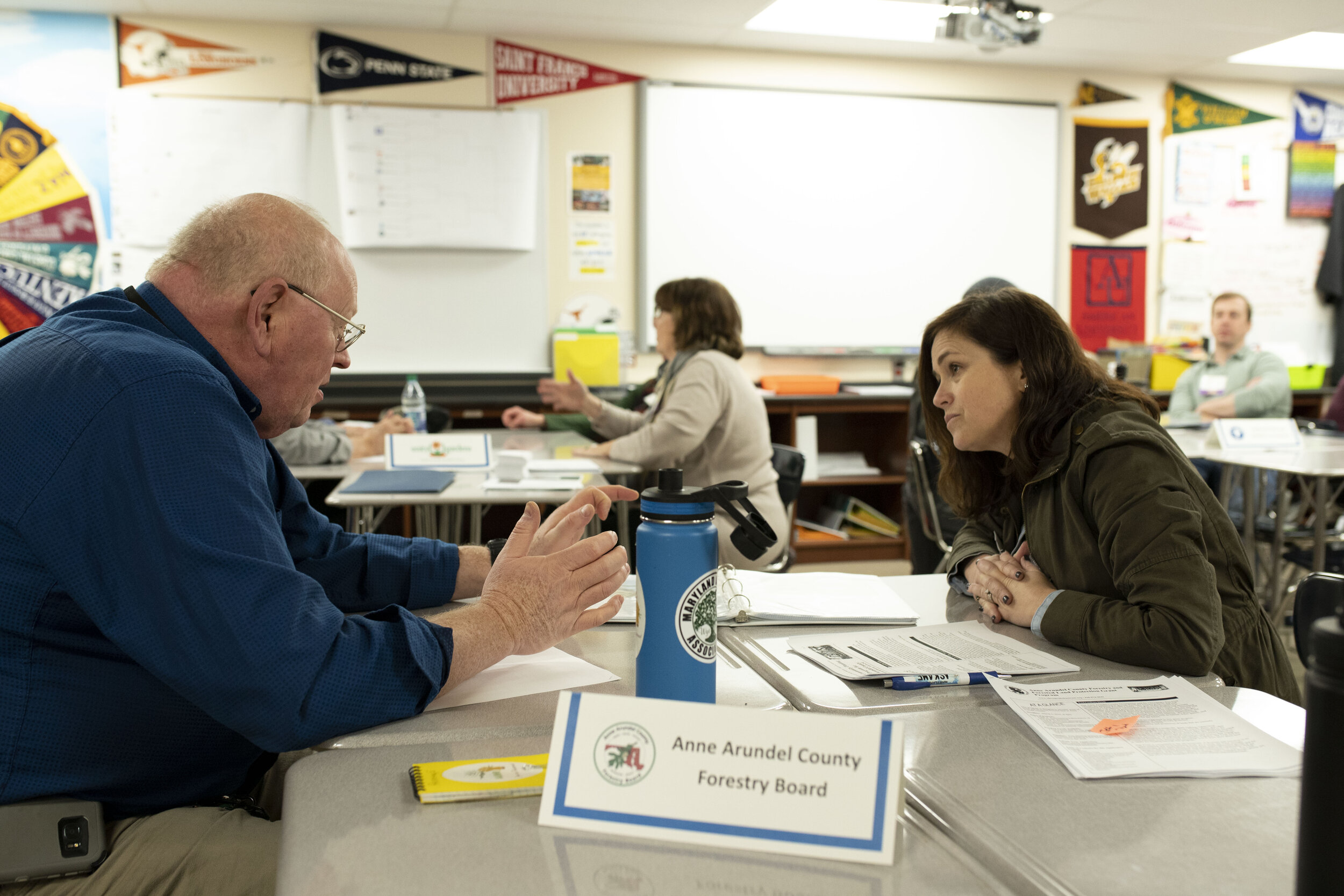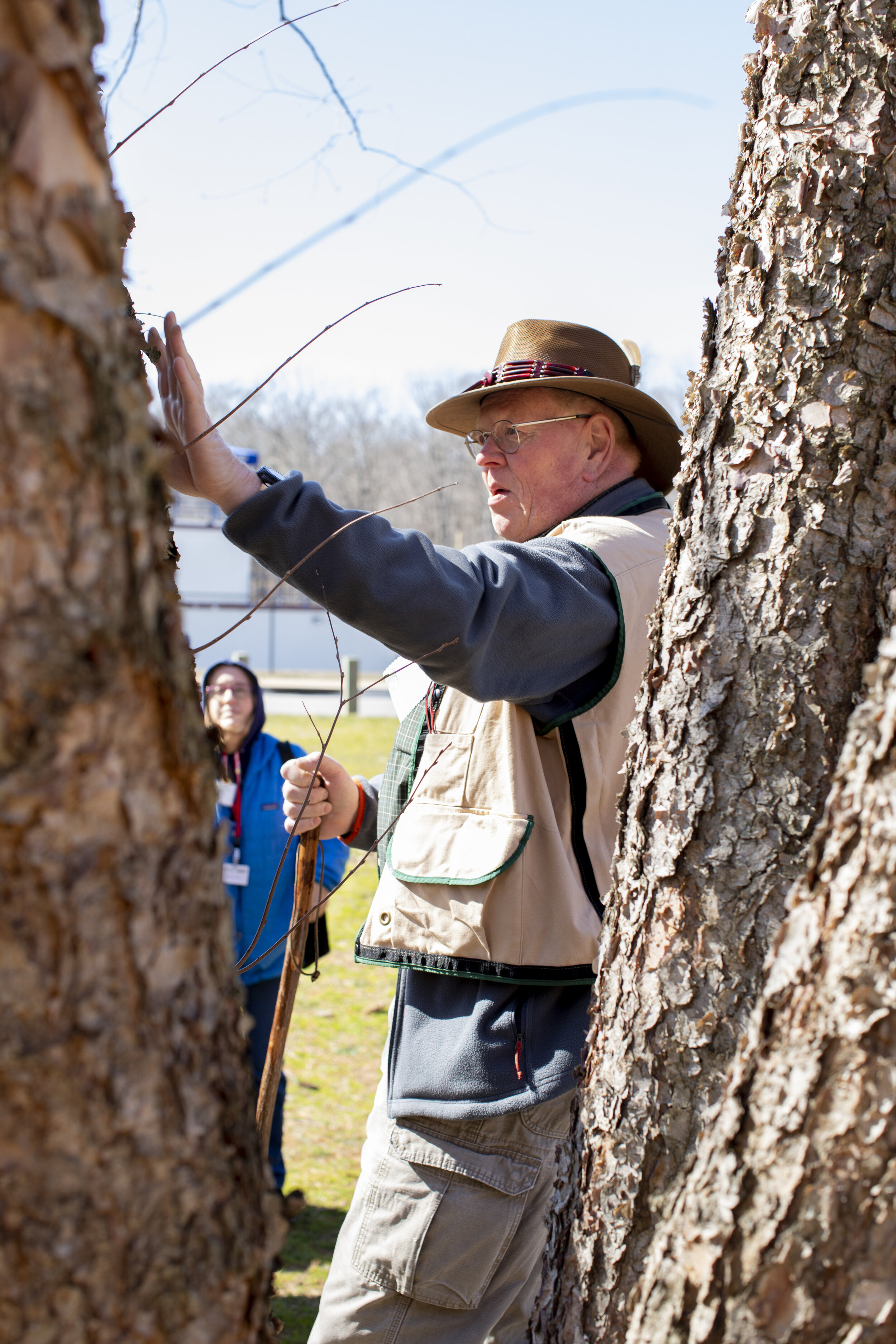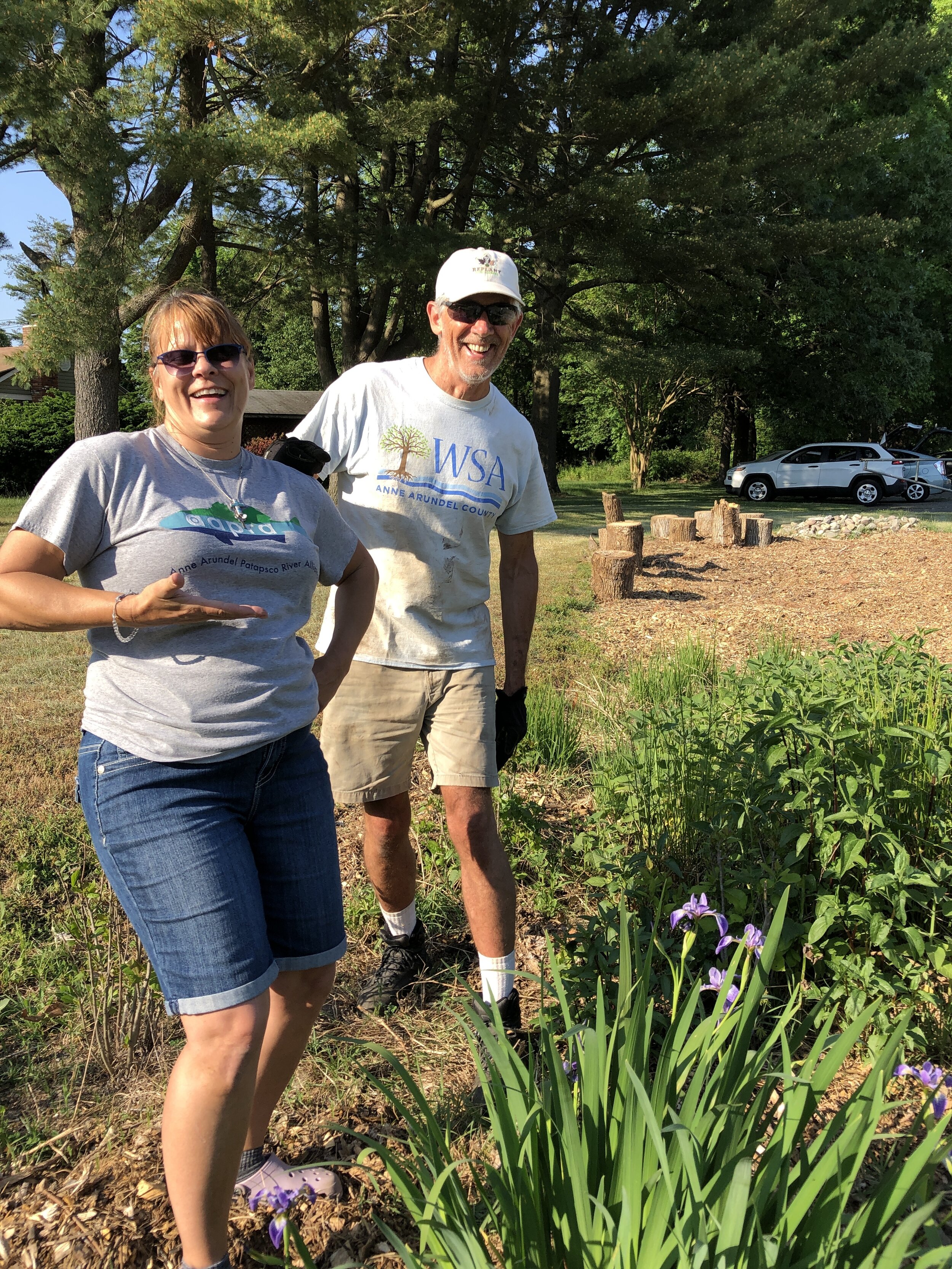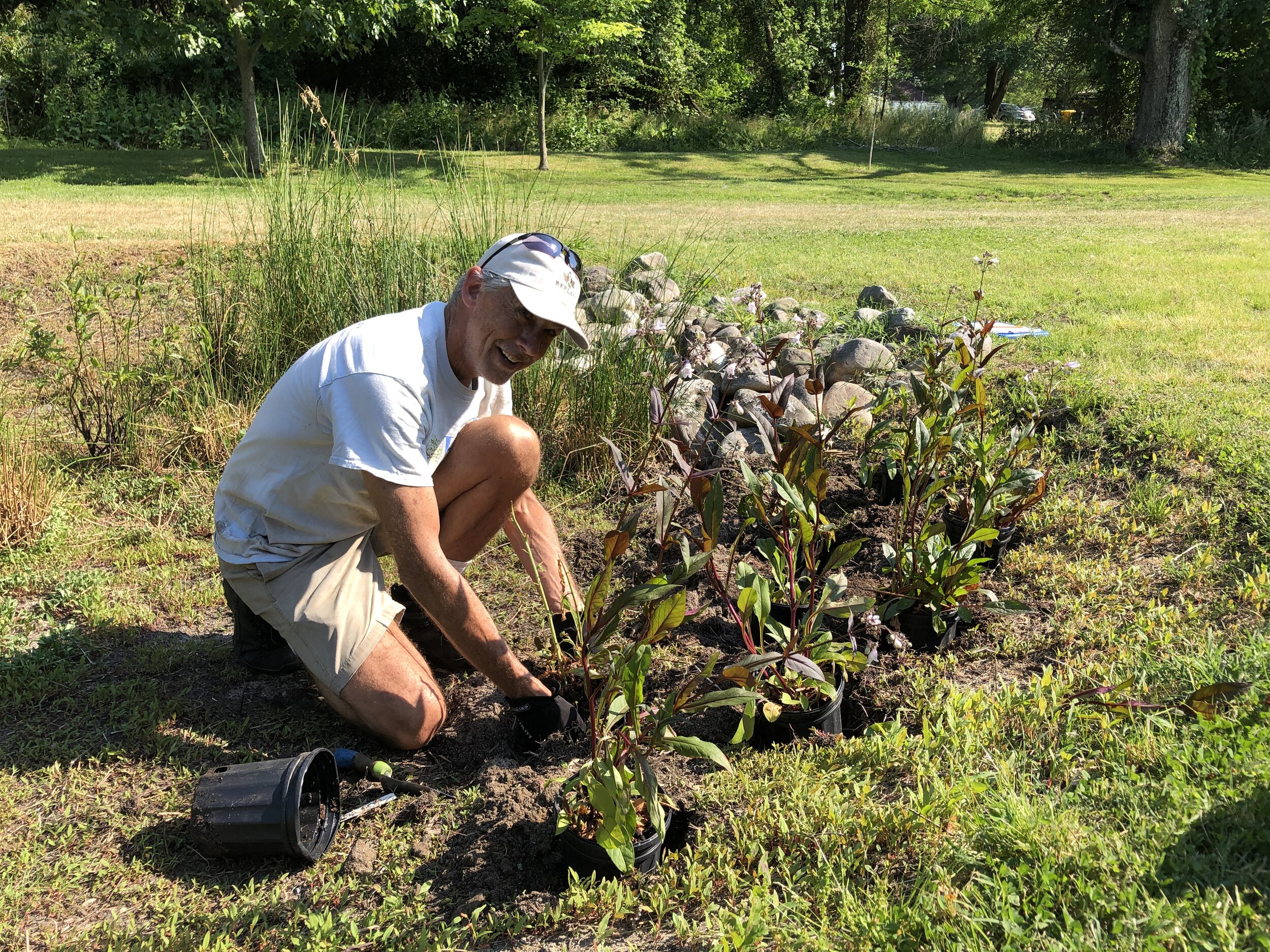The Ron Bowen Environmental Legacy Award honors the impact of WSA co-founder, Ron Bowen by recognizing an individual who has made a unique contribution to environmental stewardship in Anne Arundel County by connecting government or institutional resources with private sector investments to generate significant environmental actions.
This year, we recognize Bud Reaves with the Ron Bowen Environmental Legacy Award. As an Anne Arundel County Forester, Bud’s passion for planting and protecting trees has made him a valuable resource to WSA over the years. With his knowledge of invasive plants and critical areas, Bud plays an instrumental role in many Steward projects, including identifying invasive species and suggesting native plants and trees to replace them. Additionally, Bud is a go-to resource for Stewards and Staff alike when it comes to identifying trees.
Bud founded the Anne Arundel Weed Resistance, a volunteer organization that removes invasive plants throughout Anne Arundel County. Through a series of trainings, volunteers learn to identify and remove invasive species like English Ivy and multiflora rose. Across the county, “Weed Warriors” implement their knowledge to eradicate destructive species on private and public lands.
“Bud has been an essential part of almost all of my Steward projects. Since 2010, with our first reforestation project together, Bud has offered countless hours planting, teaching, advising, identifying, coordinating, and just showing up with a machete, in support of my work as a Steward. Bud’s branches of knowledge are wide and he is so eager to share his information and time with Stewards, students and the public to advance forestry and conservation projects. He has patiently taught me everything I know about invasive plants and management techniques through the development of the Weed Warriors program. Bud encouraged me to pursue a forestry stewardship plan for my neighborhood, helped me to develop multiple site reforestation and planting plans, and has been a team lead in my weed warrior actions in my neighborhood, and adjoining natural areas. I know he has helped countless other stewards move from ideas to environmental action. Rooted in information, and with a genuine passion for his work as a forester, Bud is a giant in the canopy of environmental action.”











